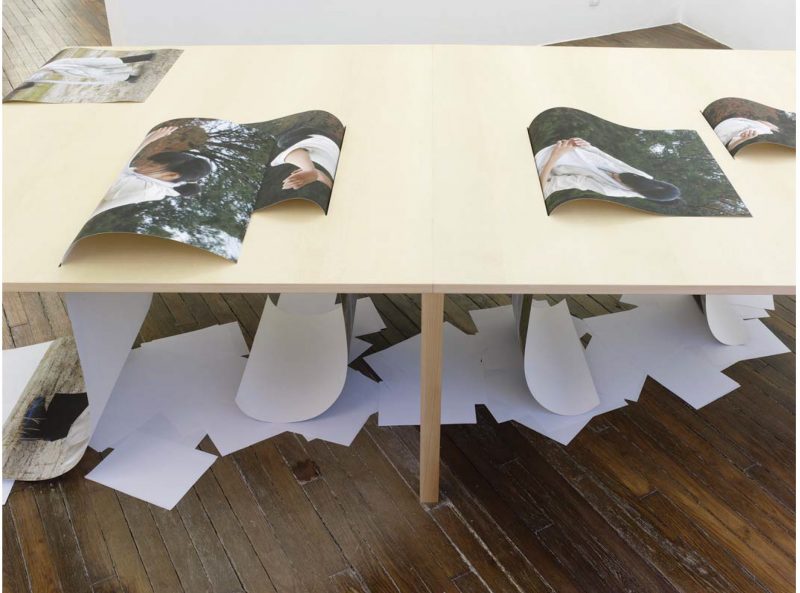Like many contemporary artists, Jimmy Robert moves easily between photography, film, sculpture, collaborative performance, and dance. Where he’s unusual is in his singular fixation on paper. Rarely does paper hang flush and unobtrusive in his works. Instead, Robert exploits paper’s physical qualities: crumpling it, hanging it in unframed images curling off the wall, crushing or folding it into frames or other restraints, casting it in plaster (sometimes painfully affixed to his body). Paper made visible and haptic gives Robert the scope to explore his favorite themes: the chasm between a live act and its documentation, how representation is impossible (but interestingly doomed), how images transmogrify across media, the brinksmanship of words and art both. We spoke via Skype, from my home in Chicago and his home in Berlin.
—Jude Stewart
Reprise

THE BELIEVER: What was the starting point for this piece?
JIMMY ROBERT: The beginning of Reprise is two images, a print by [painter Katsushika] Hokusai, Travellers Caught in a Sudden Breeze at Ejiri, and an interpretation of that print, called A Sudden Gust of Wind (After Hokusai), by Jeff Wall, who used this image as a reference to make a light-box. All of this was activated by a monthlong residency I had in Japan, at Kitakyushu, in 2009. I was intrigued by butoh, this Japanese style of dance that’s very slow, static, and contemplative. I had met [Kitakyushu curator] Akiko Miyake previously at the Yokohama Triennale, in 2008, where I saw Min Tanaka—one of the fathers of butoh—perform. Akiko put me in touch with one of Min Tanaka’s apprentices, Shiho Ishihara. That’s who you see in Reprise.
When I first interviewed Shiho, I had lots of questions. I’m not a trained dancer, but I’ve always been curious about dance and movement. I was wondering if there was a way to take the spirit of both the Hokusai image and that of Jeff Wall and have it animated by a dancer. My task was to make her inhabit not only the wind that carries along the flying papers in this image, but also pushes through the characters, the trees, as a natural force that can be fought against. Shiho performed for me in a field [near Kita kyushu], and I took hundreds of photographs. From these I selected five.
BLVR: How much direction did you give her as to how to represent these characters?
JR: I didn’t posit much to her. I didn’t know how this type of dance operates. The point was to just let her give her own interpretation of the image.
BLVR: Are there any classic gestures of butoh that you felt you had to capture?
JR: I was starting as a total neophyte. To me, everything she was doing was...
You have reached your article limit
Sign up for a digital subscription and continue reading all new issues, plus our entire archives, for just $1.50/month.
Already a subscriber? Sign in




